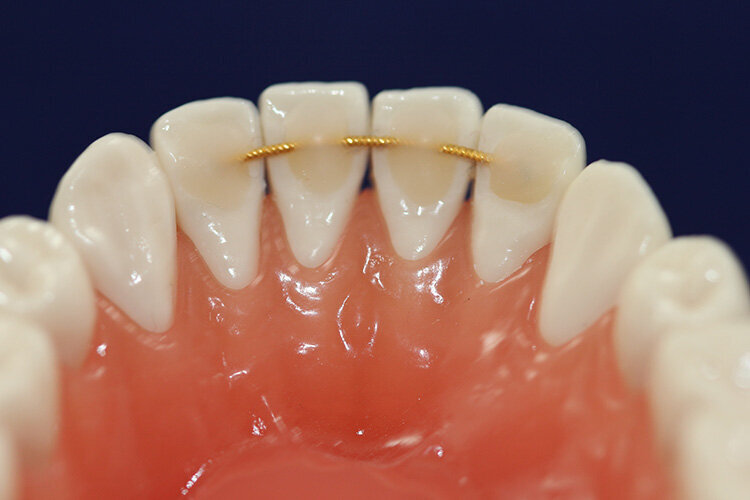Are Bonded Retainers Right for You?
Getting straight teeth is only half the battle; the other half is keeping them straight, and that is where retainers come in. Retainers come in many varieties. Unfortunately, there is no single retainer that is ideal for every patient. If there was, orthodontists would all use exactly the same kind on everyone.
There are many advantages to bonded retainers
At one end of the spectrum there are permanent or bonded retainers. These are retainers that are glued to the back (or lingual) of two or more teeth. They are considered permanent because patients can’t take them in and out on their own. These retainers have the advantage of not requiring any cooperation on the part of the patient beyond keeping them clean. Parents never have to ask their kids where these retainers are since these cannot be forgotten, misplaced, or outgrown. Bonded retainers provide the most control of any retainer type.
Bonded retainers also have disadvantages
Bonded retainers also have some disadvantages, however. They are the hardest to keep clean of any retainer type, requiring that the patients thread floss between the attached teeth. Another disadvantage of bonded retainers, especially behind the upper front teeth, is that they often come unglued from the teeth due to the cement being slowly worn away during normal chewing.
Bonded retainers are great for young children and when extra control is needed
Bonded retainers are my retainer of choice for young children between first and second phases of treatment as they do their job without any cooperation. They also have the advantage of not needing to be replaced when the mouth changes as primary teeth are lost and the remaining permanent teeth come in. We also bond permanent retainers behind the front teeth of teens and adults who have spacing, severe rotations, or mobile teeth due to a loss of periodontal support that existed before orthodontic treatment. In these cases we always explain that repair and replacement of bonded retainers is to be expected.
NOTE: The author, Dr. Greg Jorgensen, is a board-certified orthodontist who is in the private practice of orthodontics in Rio Rancho, New Mexico (a suburb on the Westside of Albuquerque). He was trained at BYU, Washington University in St. Louis, and the University of Iowa in the United States. Dr. Jorgensen’s 25 years of specialty practice and nearly 10,000 finished cases qualify him an expert in two-phase treatment, extraction and non-extraction therapy, functional orthodontics, clear aligners (Invisalign), and multiple bracket systems (including conventional braces, Damon and other self-ligating brackets, Suresmile, and lingual braces). This blog is for informational purposes only and is designed to help consumers understand currently accepted orthodontic concepts. It is not a venue for debating alternative treatment theories. Dr. Jorgensen is licensed to diagnose and treat patients only in the state of New Mexico. He cannot diagnose cases described in comments nor can he select treatment plans for readers. Please understand that because he has tens of thousands of readers each month, IT IS IMPOSSIBLE FOR HIM TO RESPOND TO EVERY QUESTION. Please read all of the comments associated with each article as most of the questions he receives each week have been asked and answered previously. The opinions expressed here are protected by copyright laws and can only be used with written permission from the author.

